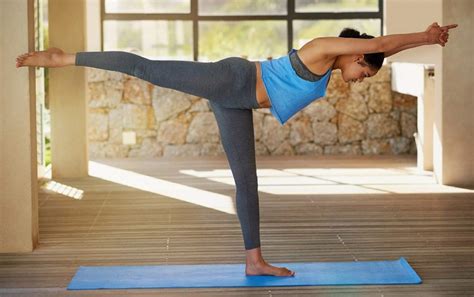Strength-Building Yoga: Types and Benefits for a Powerful Practice
Yoga is often associated with flexibility and mindfulness, but it’s also a potent way to build strength. While all types of yoga can improve overall health, certain styles are particularly effective at developing muscular endurance, stability, and power. This article explores various yoga types that focus on strength-building, highlighting their unique benefits and providing practical examples to guide your practice.
Introduction
Yoga is more than just a stretching routine—it can be a full-body workout that helps build strength, both physical and mental. Strength-building yoga styles challenge different muscle groups, improve core stability, and enhance balance. Whether you’re an athlete looking for a complementary workout or someone seeking to improve overall fitness, these yoga types can significantly boost your strength over time.
Key Concepts
- Strength-Building Yoga: Yoga styles that focus on developing muscle strength, power, and endurance.
- Isometric Holds: A strength-building technique where muscles contract without changing length, commonly found in poses like plank and chair pose.
- Functional Strength: Strength that translates into everyday activities, improved balance, and injury prevention.
- Progressive Overload: Gradually increasing intensity or duration of poses to build strength over time.
Historical Context
Yoga has its origins in ancient India, where it was practiced as a spiritual and physical discipline. Early yoga was more focused on meditation and breathwork, but over time, different schools emerged, incorporating asanas (poses) that were designed to build physical stamina and strength. By the 20th century, Western practitioners began to emphasize the physical benefits of yoga, leading to the development of styles specifically aimed at fitness, including strength-building varieties.
Current State Analysis
Today, yoga is widely recognized for its physical and mental health benefits, with various styles catering to different needs. From power yoga to Ashtanga, many forms are particularly effective for building strength. These styles emphasize dynamic movement, holding poses for extended periods, and flowing sequences that challenge different muscle groups. Here’s an analysis of some popular yoga types that focus on strength:
- Ashtanga Yoga: A rigorous style that involves performing a set series of postures in a specific order. The constant flow and focus on strength in poses like chaturanga (low plank) make it ideal for building endurance.
- Power Yoga: A fast-paced, fitness-based approach that incorporates elements from various strength-building disciplines. It’s great for those who prefer a more athletic and dynamic form of yoga.
- Vinyasa Flow: A style that links breath with movement, often involving sequences that build core strength and balance. Poses like side plank and warrior sequences target multiple muscle groups.
- Hot Yoga: Typically practiced in a heated room, this style increases flexibility and challenges muscle endurance. Holding poses in heat requires strength and concentration.
- Bikram Yoga: A form of hot yoga with a fixed sequence of 26 poses, many of which build strength in the legs, core, and arms.
Practical Applications
To incorporate strength-building yoga into your routine, start with basic poses and gradually increase intensity. Focus on the following techniques:
- Isometric Holds: Hold poses like plank, chair, and warrior for longer durations to build muscle endurance.
- Dynamic Movement: Flow through sequences such as sun salutations, which strengthen the core, legs, and shoulders.
- Balance Poses: Work on poses like tree pose and half-moon to improve stability and leg strength.
- Progressive Overload: Gradually increase the difficulty by adding variations to standard poses or holding them longer.
Case Studies
The following case studies illustrate how practitioners of different fitness levels have benefited from strength-building yoga:
| Case Study | Initial Fitness Level | Yoga Style | Results |
|---|---|---|---|
| Case 1: Athlete Supplementing Strength | High | Power Yoga | Improved core strength and injury prevention through dynamic sequences and balance poses. |
| Case 2: Beginner Seeking Full-Body Workout | Low | Vinyasa Flow | Gained muscular endurance and flexibility over 6 months with progressive overload in poses like plank and warrior. |
| Case 3: Weight Loss Journey | Moderate | Hot Yoga | Enhanced strength and stamina, especially in lower body and core, through heat-intensified isometric holds. |
Stakeholder Analysis
Understanding the interests of different stakeholders is key to appreciating the value of strength-building yoga:
- Yoga Practitioners: Seek to enhance their strength, balance, and mindfulness through practice.
- Fitness Trainers: Often incorporate yoga as a low-impact method for strength training and injury prevention.
- Health Professionals: Recommend yoga for improving physical health, particularly for patients with joint or muscle issues.
- Yoga Instructors: Focus on teaching sequences that balance strength-building with mindfulness and flexibility.
Implementation Guidelines
To implement a strength-building yoga routine, follow these steps:
- Set Goals: Determine whether your focus is on overall strength, specific muscle groups, or injury prevention.
- Choose the Right Style: Select a yoga style that aligns with your goals. For general strength, consider Vinyasa or Ashtanga.
- Warm-Up and Cool-Down: Always begin with a gentle warm-up to prevent injury, and end with stretches or restorative poses.
- Progress Gradually: Start with beginner poses and gradually move to more advanced ones. Avoid overexertion.
- Focus on Form: Proper alignment is crucial to gaining strength and avoiding injury. Use mirrors or ask for feedback from instructors.
Ethical Considerations
While strength-building yoga is generally safe, it’s important to consider the following ethical concerns:
- Accessibility: Yoga should be inclusive and accessible to people of all body types, fitness levels, and abilities.
- Physical Limitations: Practitioners should listen to their bodies and avoid pushing too far beyond their current abilities.
- Commercialization of Yoga: The rise of yoga as a fitness trend has led to its commodification, potentially diluting its traditional spiritual roots. Balancing commercial success with respect for its origins is an ongoing ethical issue.
Limitations and Future Research
Although strength-building yoga has many benefits, there are certain limitations:
- Individual Variability: The effectiveness of yoga for strength-building varies depending on a person’s baseline fitness level, flexibility, and practice frequency.
- Risk of Injury: Improper form or pushing too hard can lead to muscle strain or joint injuries.
- Lack of Cardiovascular Focus: While yoga can build strength, it may not provide the cardiovascular benefits of more aerobic forms of exercise.
Future research could explore the long-term effects of different yoga styles on muscle strength and endurance, as well as their impact on populations with specific health conditions.
Expert Commentary
Yoga experts agree that strength-building yoga can be transformative for both body and mind. “When practiced consistently, yoga helps build functional strength that supports daily activities and enhances athletic performance,” says Sarah Thompson, a certified yoga instructor with over 15 years of experience. “What sets yoga apart from other forms of exercise is its holistic approach—you’re not just working muscles, you’re also improving balance, flexibility, and mental focus.”
Dr. Michael Rivera, a sports medicine specialist, adds, “Yoga’s strength-building potential is often underestimated. Incorporating isometric holds and dynamic movements like those in Vinyasa or Power Yoga can offer significant benefits to anyone looking to increase muscle tone and endurance.”








